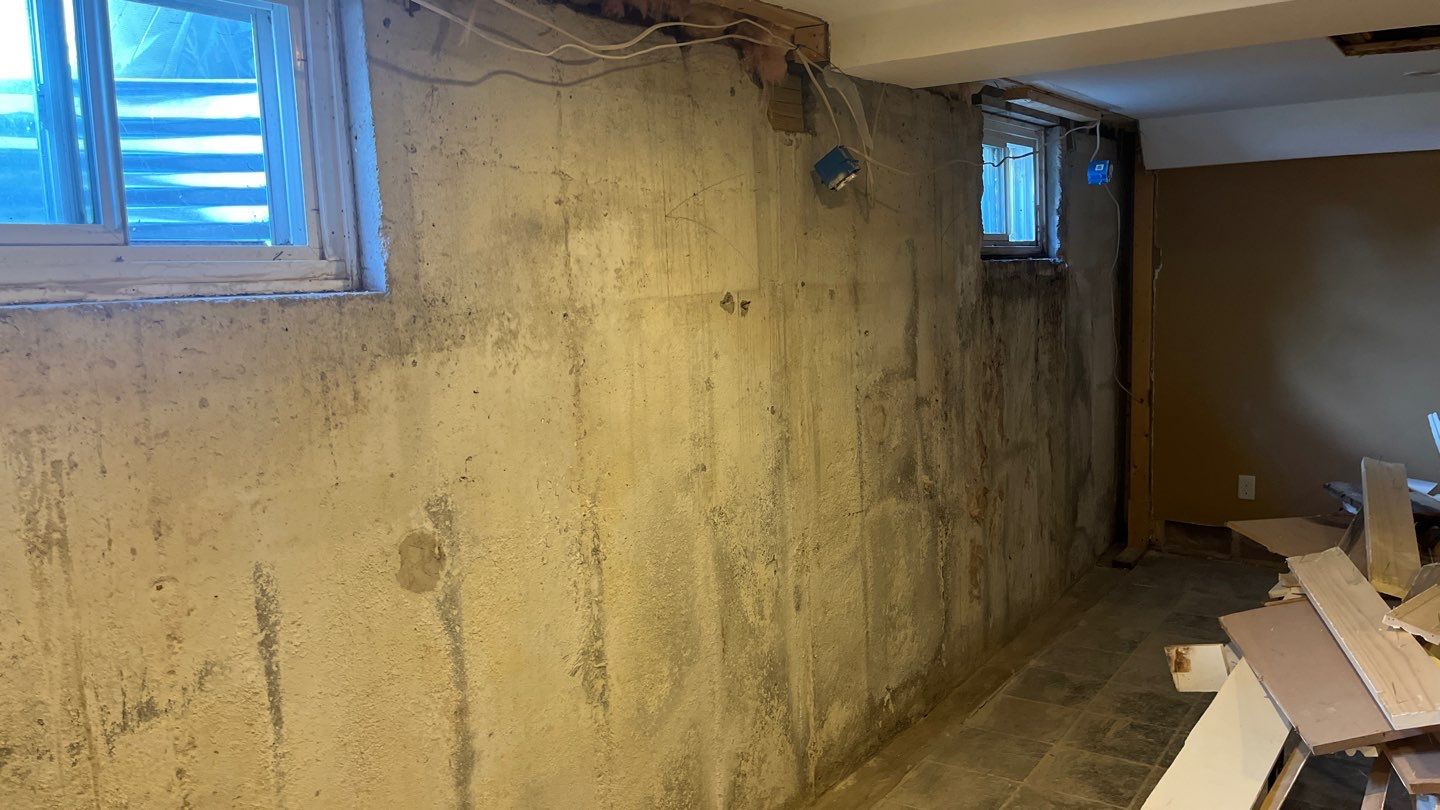No one wants a moldy basement. Firstly, mold means spores and spores can trigger allergies, cause rashes and generally lower the health of your household. Secondly, mold will ruin anything it grows on, including things you’re storing and wall-coverings. Lastly, it’s unsightly, turning what could be a great, liveable space into a dank, dark pit.
If you’re wondering how to prevent mold in your basement, what causes it and how to control it, read on.
Understanding Mold and Its Growth
Mold is a collective name for thousands, if not millions, of species of microscopic fungi. When they gather together, they create colonies, bound together by filaments. Molds come in all kinds of colors and textures, but the most common to find in basements are black, green and red. They generally have a slightly ‘fuzzy’ texture.
They thrive in nooks and crannies and damp or humid conditions. Unfortunately, those are adjectives which apply to a lot of basements.
Why Mold Grows In Basements And Crawl Spaces
There are two major features of basements and crawl spaces which make them particularly susceptible to mold infestations:
- Moisture and humidity
- Poor ventilation
Basements, being set into the ground below our homes, tend to be exposed to more moisture than most places. Once it gets in, the lack of ventilation means that it’s less likely to evaporate and escape. This combination of traits makes basements and crawl spaces particularly good places for mold to get a hold.
In comparison to the rest of the home, it’s easy to see what causes mold growth in basements. We’re constantly opening and closing windows and doors, running heating or AC and generally ventilating our living spaces. Likewise, any sign of a leak in the areas we’re spending most time in is usually quickly dealt with.
Unfortunately, the same can’t always be said for most basements.
Signs of Mold In Basements And Crawl Spaces
If mold is growing in your basement or crawl space, there will be signs which should alert you. Some of these are pretty obvious, such as black spots forming on walls, but others can be more subtle. Keep an eye out for:
Visual Signs:
Black, green or red growths, usually slightly furry in appearance, spreading across surfaces and stored items. Pay particular attention to walls, ceilings, corners and behind insulation.
Non-visual Signs
That ‘basement smell’, a distinctively ‘musty’ odor, is a likely symptom of a mold infestation. Mold can trigger health problems and allergies, so if your household seems to be getting sick with no explanation, it’s possibly a sign of mold growth. The ‘chimney effect’ means that spores will spread, so it’s worth investigation, even if you’re never in the basement.
Preventing Mold Growth: Effective Strategies
Now that we know what conditions make it more likely, how do we go about preventing mold growth in basements? The following steps represent a crash-course in basement mold control:
Moisture Control
As we mentioned above, mold loves damp, humid conditions, so getting moisture levels under control is absolutely vital.
The first step towards preventing basement mold growth is fixing leaks. These might come from dripping plumbing or from cracks in your basement walls and floor. Regardless of the source, stopping them is priority number one.
Plumbing leaks:
Check that joints are tight, pipes are in good condition, and appliances are sound. If your inspection turns up any signs of water or corrosion, fix it or call a plumber. The longer you leave it, the worse (and more expensive) it will get.
Crack Repairs
Not all cracks in a basement floor or wall need repairing, but if you find something which seems damp, it’s best to get it sorted. As a general rule of thumb, anything that’s less than 1/8th of an inch wide can be left. If it’s bigger than this, or it’s spreading, get it filled.
Waterproofing
Once you’ve dealt with any serious leaks, it’s worth giving some thought to your basement waterproofing systems. The simplest of these are things which you can apply yourself and include:
- Crystalline Coatings: These react with the concrete and block up any tiny gaps which may have formed.
- Paints and Sealants: These create an impermeable layer, locking out any moisture which may be finding its way in.
Humidity Control
Now that you’ve dealt with the liquid contributing to mold growing in your basement, it’s time to tackle the vapors. All air contains a certain amount of water vapor, known as humidity. Sometimes weather conditions, or a lack of ventilation, allow this level to rise. If it rises high enough, it can provide the moisture that mold needs to thrive.
Controlling humidity levels in your basement is relatively straightforward. A dehumidifier will draw moisture out the air and remove it from your home. They come in a few different configurations, but for a basement space, you’ll likely want a refrigerating model.
Another alternative, or complimentary treatment, for preventing mold growth in your basement is increasing ventilation. Installing vents, fans or exhaust/extractor systems will allow air to circulate, avoiding a build-up of humidity.
Drainage Solutions
Another key tool in your arsenal when considering how to prevent mold in your basement is proper drainage. Ensuring water has an easy path to flow away harmlessly means that it’s less likely to threaten your waterproofing and makes basement mold control much easier. Consider the following:
Gutters and Downspouts
It may seem strange, but a healthy basement starts on the roof. Ensuring that rainwater is directed away from your foundations reduces the chances of finding mold growing in your basement.
Grading
Water flows downhill and grading ensures the ground around your foundations allows this principle to work in your favor. Earth is compacted into a slight slope against your basement walls, meaning water flows away.
French Drains and Sump Pumps
Installing systems to remove water that does threaten to find its way in can work wonders for basement mold control.
- French drains are, in effect, horizontal perforated drainpipes which allow water in. This is then conducted along the drain to an outlet.
- Sump pumps deal with groundwater threatening your basement floor. They sit in a pit below your home and activate when groundwater levels get too high, pushing it away.
Insulation and Vapor Barriers
Installing vapor barriers and ensuring that ducts and pipes are properly insulated are both fantastic tools for moisture control.
Insulating pipes means that the risk of condensation, an ideal source of moisture for basement mold growth, is reduced. When humid air touches on the cold metal or plastic, some water will condense, leaving droplets behind and watering any spores which may be present. Insulation avoids this contact, minimizing this source of moisture in your basement.
Vapor barriers block moisture from the surrounding ground finding its way into your home. There are dozens of varieties and materials, but in effect they all form an impenetrable (or effectively impenetrable) barrier. This avoids a key source of moisture from contributing to mold growth in your basement or crawl space.
Regular Maintenance
Unsurprisingly, the most important answer to the question “How to prevent basement mold growth” is keeping up with your regular maintenance routines.
No matter how comprehensive your basement waterproofing may be, without regular inspections something will go wrong eventually. Keeping an eye on sump pumps, clearing guttering and making sure seals are sealed all help prevent basement mold growth.
Cleaning
Naturally, the single most effective way of preventing mold in your basement is also the most simple: clean it. Mold reproduces by spores which are carried in the air before they settle, colonising a surface. Regularly cleaning, vacuuming and dusting will minimize the number of these spores in your basement, keeping it mold free.
Certain essential oils are particularly effective anti-fungal agents and can be easily added to your cleaning routine. Tea tree, lavender and eucalyptus will help tackle both the cause and the symptoms of basement mold growth. Not only do they kill spores, they freshen the air as they do so, eliminating that musty ‘basement odor’.
Likewise, keeping the space free of clutter will maximize the airflow, making your basement less hospitable to molds. Reducing the number of hiding places for mold by storing papers and cloths in sealed plastic containers works wonders. It also means if the worst happens, it’s relatively contained, saving as many of your keepsakes as possible.
If you find yourself facing the dreaded black spot, or you’re simply wondering how to prevent mold in your basement in the first place, keeping it clean and dry will work absolute wonders. Keeping on top of waterproofing maintenance, installing new measures and reducing clutter can turn your basement into a livable space.

